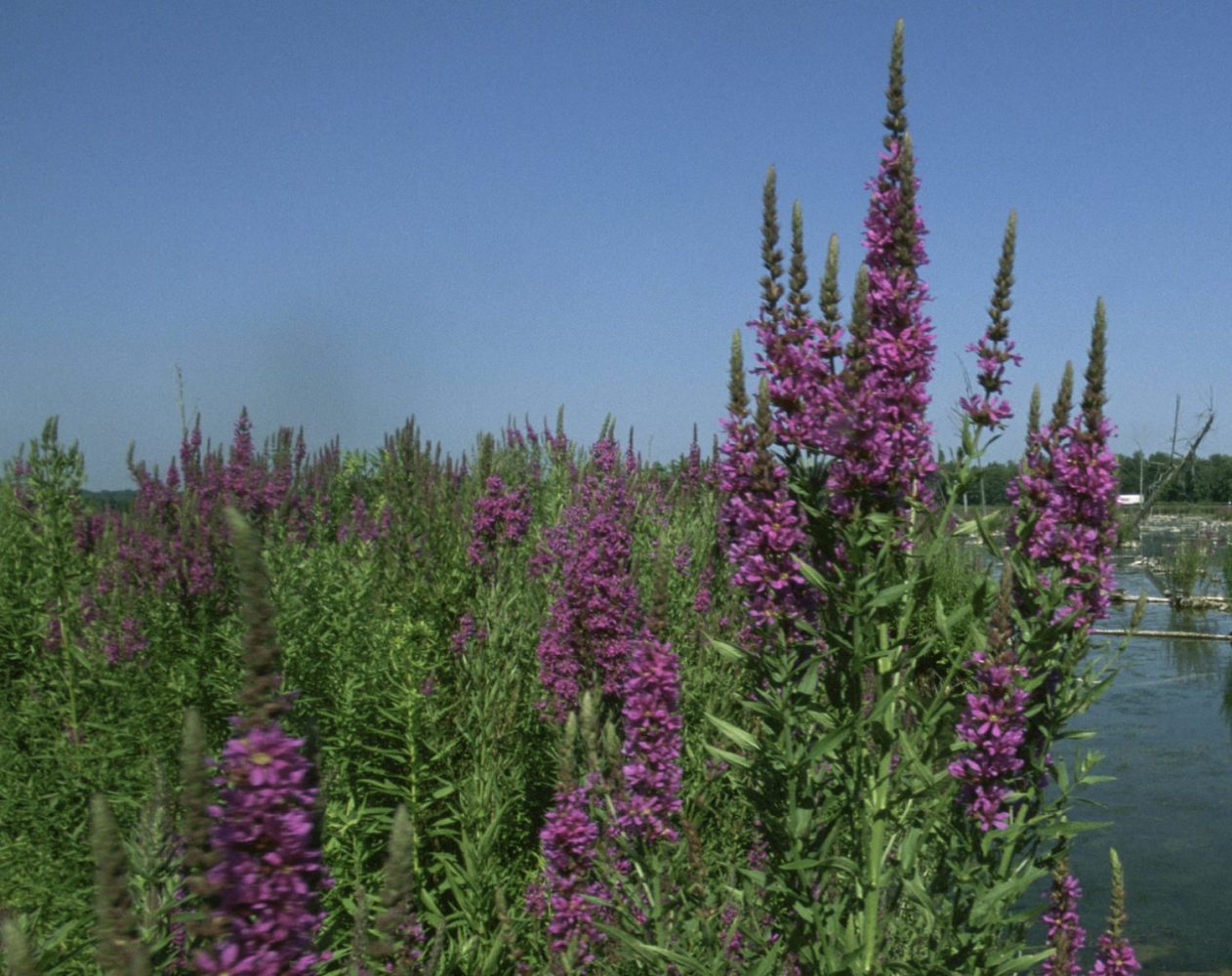Wondering how to help fight invasive species? Wisconsin First Detector Network is a great start

From Living on the Lake magazine, June 2016
By Timi Eckes
Invasive species are on the move across many parts of the country and are a growing subject of concern. Failure to get a handle on invasives that are overrunning the native species in a given area results in changes to the landscape, the environment and even the area’s economy.
Invasive species are a major threat to the biodiversity that’s necessary for a healthy environment, second only to habitat loss, according to the Wisconsin First Detector Network (WIFDN) website.
With invasives such as purple loosestrife, garlic mustard, emerald ash borer, Eurasian water milfoil and a host of other unwelcome guests a growing threat to Wisconsin’s native flora and fauna, more people are realizing that it’s critical to stop these species from spreading. But more citizens are needed to join the effort.
“Budget cuts to agencies tasked with surveying for invasive plants added a level of importance to getting citizen science volunteers involved,” says Tony Summers, the program coordinator for the WIFDN. The organization was first formed in 2013 and was launched in 2014, he explains, to increase early detection and reporting of invasive species in the state with the help of volunteers.
According to Summers, the WIFDN currently has about 220 members around the state. Those members help fight invasive species in a variety of ways. Roughly half of them, he says, help with mapping of invasive species and surveying baseball diamonds in their areas for Cerceris wasps, the presence of which indicates the presence of emerald ash borer. “Members have also contributed articles to their local newspapers, staffed booths at events and performed other outreach activities,” Summers adds.
Most anyone who wants to become involved with the WIFDN is welcome. Volunteers are asked to commit a minimum of 20 hours a year to working with WIFDN. At this time, Summers adds, there isn’t a fee to join, and those who join and volunteer this year and maintain the 20-hourper-year commitment will keep their membership current.
The WIFDN’s website features a variety of educational videos and other resources, and the organization offers volunteers the chance to participate in a multi-part interactive webinar series each spring. This year’s webinar series has already been held, but videos are available to watch any time on the WIFDN website.
Expanding its reach across Wisconsin is a top priority for those leading the Wisconsin First Detector Network. To do this, the organization wants to work with nature centers and school groups. “By working with nature center staff and teachers, we are able to adopt a ‘train the trainer’ model and multiply our reach,” Summers says.
Helping private forest land owners create management plans and maps of their property is another project on which WIFDN leaders are working.
Growing its membership throughout the state is yet another goal. “Northern Wisconsin is an area of emphasis for increasing membership,” Summers says, adding that some of WIFDN’s members are from the Northwoods, but not many.
More members in northern Wisconsin would be very helpful, he explains, because there are many high priority invasive species in the region. Each invades different habitats.
For example, he says, “Common reed (Phragmites australis) is a major threat in the northwestern part of the state along roads and waterways.” There are also several species of knotweeds to worry about, as well as garden valerian (Valeriana officinalis).
That’s just for starters; there are many invasive species in northern Wisconsin, and Summers recommends a visit to arcg.is/1TFjsdN to see customized lists of invasive plant species in each county.
With easy access to many exotic ornamental landscaping plants and the tendency of invasive plants and animals to hitch rides from one lake to another on water craft, it’s not hard to see how species that don’t belong here can gain a foothold.
The list of invasive species continues to grow and often includes those that people at first didn’t realize would cause problems.
“While we do have reports of Japanese barberry and burning bush, we expect these to become major issues in the next several years,” Summers says. Species that aren’t problems here now could be in the future. Summers cites the example of the callery pear, which is a fast-growing, ornamental tree planted in yards and along some city streets. The tree is native to China and Vietnam and is also known by the names Bradford pear, Chanticleer pear, Aristocrat pear and Cleveland Select pear. This kind of tree is showing invasive tendencies in southern Wisconsin, Summers notes, adding that it’s also becoming quite a problem in areas around the country.
While invasive species are great cause for concern, volunteers are making a difference. In the two years since the WIFDN was launched, its members have reported more than 1,300 invasive plant populations in Wisconsin and have volunteered hundreds of hours to remove invasive species, Summers notes. Also in that short time, WIFDN volunteers have surveyed many baseball diamonds for the Cerceris wasp – enough, Summers says, “to match what the USDA has been able to accomplish on their own (roughly equivalent to one full-time staff member).”
Invasive species are a complicated problem, but helping to fight them isn’t. The easiest way to get involved in helping to stop invasive species, Summers says, “is to download the Great Lakes Early Detection Network smartphone app or report invasives through the EDDMaps.org website. The same user name and password will work in both places and both are fee to use. It’s a great way to add value to your hikes and other outdoor activities.”
For more information about the Wisconsin First Detector Network, visit fyi.uwex.edu/wifdn/.
Leave a reply
You must be logged in to post a comment.

